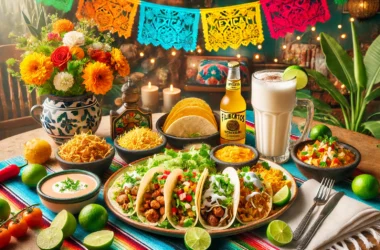Understanding the nuances of food analogs helps consumers make informed dietary choices. The term is chicken tenders a food analog refers to substitutes or alternatives that mimic the taste, texture, or function of traditional foods. When it comes to chicken tenders, many wonder if they qualify as a food analog or if they belong to a different category entirely. This article dives into the definition, preparation, and broader implications of this question.
What Are Food Analogs?
Is chicken tenders a food analog, also known as food substitutes, are designed to replicate the taste, texture, and functionality of conventional food products. These analogs can be created using plant-based ingredients, laboratory processes, or alternative proteins.
Characteristics of Food Analogs
- Similar Taste and Texture: Mimics traditional food to appeal to consumers.
- Nutritional Value: Often designed to match or exceed the original product’s nutritional profile.
- Alternative Ingredients: Typically involves plant-based proteins, fungi, or lab-cultured components.
- Sustainability: Aims to reduce environmental impact compared to traditional animal agriculture.
What Are Chicken Tenders?
Chicken tenders are boneless, skinless strips of meat, typically cut from the breast of a chicken. Known for their tenderness and flavor, they are widely popular in both home-cooked and restaurant meals.
Types of Chicken Tenders
- Traditional Chicken Tenders: Made from actual chicken meat, these are lightly breaded and fried or baked.
- Plant-Based Chicken Tenders: Crafted from plant proteins to replicate the texture and flavor of chicken.
- Cultured Chicken Tenders: Produced in laboratories using cultured animal cells.
is chicken tenders a food analog
To determine whether chicken tenders qualify as a food analog, it is essential to differentiate between traditional chicken tenders and their plant-based or cultured counterparts.
Traditional Chicken Tenders
- Not a Food Analog: Made from real chicken meat, they do not mimic another food item.
Plant-Based Chicken Tenders
- Yes, a Food Analog: These are explicitly designed to replicate traditional chicken tenders.
Cultured Chicken Tenders
- Partial Analog: While technically meat, the production process mimics traditional agriculture, positioning it as a hybrid analog.
Benefits of Chicken Tenders as a Food Analog
When plant-based or cultured chicken tenders are considered food analogs, they offer several advantages:
- Sustainability: Requires fewer natural resources compared to traditional poultry farming.
- Ethical Production: Reduces harm to animals.
- Allergen-Friendly: Can be made without common allergens like eggs or dairy.
- Nutritional Customization: Tailored to include added vitamins and minerals.
- Dietary Inclusivity: Suitable for vegetarians, vegans, or flexitarians.
Challenges of Food Analogs
While food analogs like plant-based chicken tenders have gained traction, there are notable challenges:
- Cost: Often more expensive than traditional options.
- Processing: Highly processed, which can deter health-conscious consumers.
- Flavor Differences: Some individuals prefer the authentic taste of traditional chicken.
- Limited Availability: May not be as accessible globally.
How Are Plant-Based Chicken Tenders Made?
The production of plant-based chicken tenders involves:
- Ingredient Sourcing: Pea protein, soy protein, or wheat gluten are commonly used.
- Flavoring: Spices and natural flavors are added to mimic chicken.
- Texturization: Advanced processes create a fibrous texture resembling meat.
- Coating: Breaded to achieve the traditional crispy exterior.
Comparing Traditional and Analog Chicken Tenders
| Feature | Traditional Chicken Tenders | Plant-Based Chicken Tenders | Cultured Chicken Tenders |
|---|---|---|---|
| Source | Real chicken meat | Plant-based proteins | Lab-grown animal cells |
| Nutritional Value | High in protein | Variable | Similar to real chicken |
| Environmental Impact | High | Low | Moderate |
| Availability | Widely available | Increasing | Limited |
| Cost | Affordable | Higher | High |
Consumer Reviews on Food Analogs
Positive Feedback
- “Plant-based chicken tenders taste just as good as the real thing!” – Ramesh K.
- “Cultured meat is a fascinating innovation—I’m excited to see where it leads.”
Negative Feedback
- “The texture of some analogs feels off compared to traditional chicken.”
- “The price point is too high for regular consumption.”
Conclusion
is chicken tenders a food analog The answer lies in the type of chicken tenders being discussed. Traditional chicken tenders are not food analogs, while plant-based and cultured options fall under this category. As dietary preferences evolve, food analogs offer innovative solutions for ethical, sustainable, and inclusive eating. However, challenges like cost and accessibility need to be addressed to make them a mainstream choice. Understanding the nuances of these products helps consumers make informed decisions that align with their values and lifestyle.
Also Read: Hearthstats Net News: Your Ultimate Source for Gaming Insights
FAQs: Is Chicken Tenders a Food Analog?
1. What defines a food analog?
A food analog is a product designed to replicate the taste, texture, or nutritional value of another food item.
2. Are traditional chicken tenders considered food analogs?
No, traditional chicken tenders are made from real chicken meat.
3. Do plant-based chicken tenders qualify as food analogs?
Yes, they are specifically designed to mimic traditional chicken tenders.
4. What are cultured chicken tenders?
Cultured chicken tenders are produced using animal cells grown in labs, offering a sustainable alternative to traditional farming.
5. Are chicken tenders healthy?
It depends on preparation and ingredients. Baked versions or analogs with added nutrients can be healthier options.
6. Where can I buy plant-based chicken tenders?
They are available in grocery stores, specialty health food shops, and online platforms.
7. How do food analogs benefit the environment?
They typically use fewer resources, generate less pollution, and reduce dependency on traditional animal farming.




